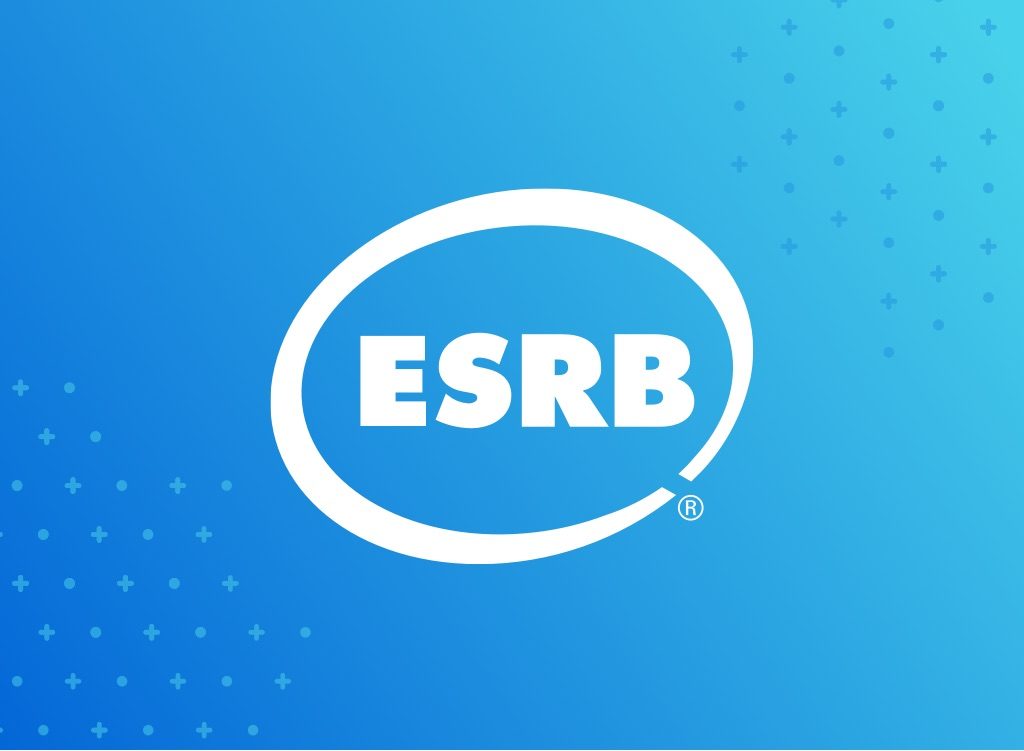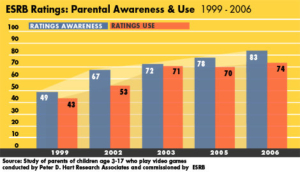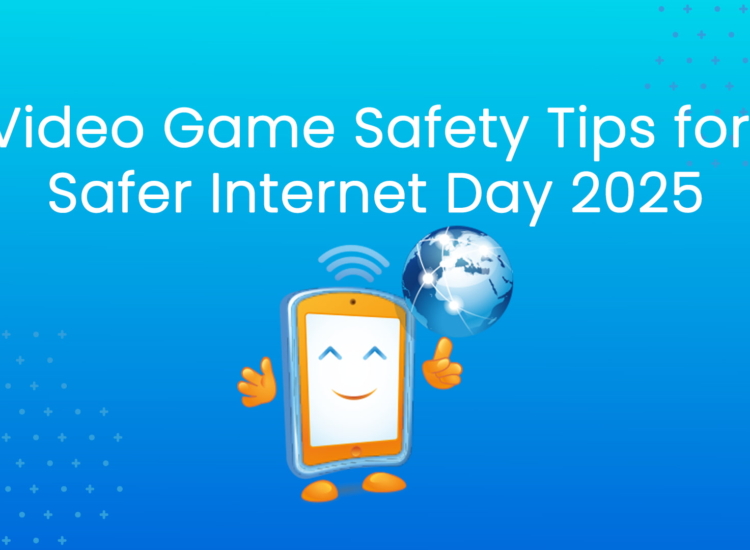Awareness, Use and Trust Of ESRB Video Game Ratings Reach Historical High-Point Among Parents

RATINGS INCREASINGLY AND OVERWHELMINGLY USED TO GUIDE GAME PURCHASE DECISIONS
(MARCH 29TH, 2006)
(NEW YORK) – National research measuring parental awareness and use of the ratings for computer and video games shows that 83% of American parents of children who play video games are aware of the ESRB ratings, and 74% use them regularly when buying games for their families according to a study commissioned annually by the Entertainment Software Rating Board (ESRB). Both figures are higher than those measured in the same study in 2005, when awareness and use were at 78% and 70% respectively (see historical chart below). The study was conducted by Peter D. Hart Research Associates in early March, and surveyed over 500 parents of children age 3 to 17 that play video games.
“It’s been shown that nine times out of ten, a parent is involved in the purchase of a video game, so we’re very pleased to find that more and more parents are using the ratings to help them make informed choices about the games they bring home for their children,” said ESRB president Patricia Vance. “Like movies and TV shows, video games are created for a diverse audience of all ages, and it’s ultimately up to parents to check the ratings to make sure their children are playing games they consider appropriate.”
The study also revealed that an increasing number of parents are using the ratings to restrict their children from playing games rated M (Mature). A majority of those surveyed (53%) said they “never” allow their children to play M-rated computer and video games, while 41% said they “sometimes” do. The M (Mature) rating is assigned by the ESRB to indicate that a game may be suitable for ages 17 and older. Other findings include:
- 94% said the ratings are very helpful (72%) or somewhat helpful (22%)
- 91% are confident that ratings accurately describe a game’s content
- 72% said that the rating is the most important (31%) or a very important consideration (41%) when deciding whether or not to purchase a game
- 91% say their trust in the ESRB ratings has either stayed the same (76%) or increased (15%) in the past year
- More than half said they check content descriptors “every time” (35%) or “most of the time” (16%)
“Parental confidence in the ESRB ratings has never been greater than what we see in this study,” said Jay Campbell of Peter D. Hart Research Associates. “The number of parents nationwide that are aware of the ESRB ratings and using them regularly when choosing games for their families continues to grow with each year. In fact, not only are more parents using the ratings, they are using them more often than ever before.”
“We are very encouraged that as awareness and use among parents continue to rise to historic levels, trust in the ratings as a reliable source for determining which games are appropriate for their families continues to increase, as well,” Vance added.
The ESRB rating system includes six age-based rating categories: EC (Early Childhood) for ages 3+, E (Everyone) for ages 6+, E10+ (Everyone 10 and older), T (Teen) for ages 13+, M (Mature) for ages 17+, and AO (Adults Only) which indicates that the game should only be played by adults age 18 and older. The rating category is found on the front of virtually every game sold at retail in the U.S. The rating system also includes 32 content descriptors, found next to the rating category on the back of game packages, which describe content in the game that may be of interest or concern to parents, including violence, sexual content, language, use of controlled substances, and gambling.
HISTORICAL AWARENESS AND USE OF ESRB RATINGS AMONG PARENTS
About Entertainment Software Rating Board (ESRB)
The ESRB is a non-profit, self-regulatory body established in 1994 by the Entertainment Software Association (ESA). ESRB independently assigns computer and video game content ratings, enforces advertising guidelines, and helps ensure responsible online privacy practices for the interactive entertainment software industry.



